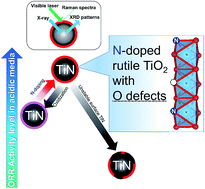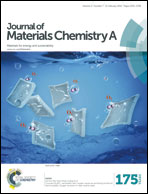Activity and durability of the oxygen reduction reaction in a nitrogen-doped rutile-shell on TiN-core nanocatalysts synthesised via solution-phase combustion†
Abstract
Core–shell-structured titanium oxynitride nanocatalysts were synthesised on carbon black via an inexpensive solution-phase combustion route. The synthesis conditions were systematically optimised to exhibit the highest oxygen reduction reaction (ORR) activity at 0.9 V versus the reversible hydrogen electrode in 0.1 mol dm−3 H2SO4. The nitrogen-doped rutile TiO2 shell successfully protected the TiN core without altering the ORR mechanism after 20 000 potential cycles between 0.6 and 1.0 V.


 Please wait while we load your content...
Please wait while we load your content...